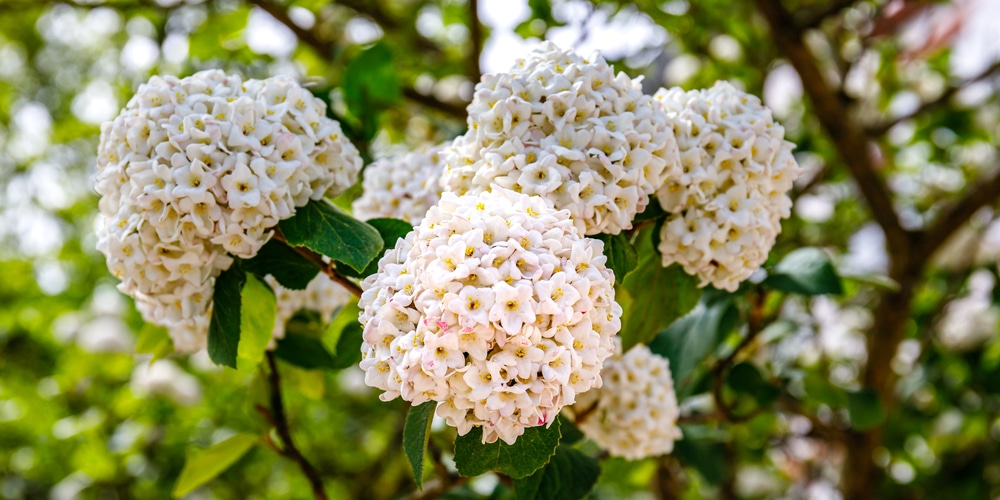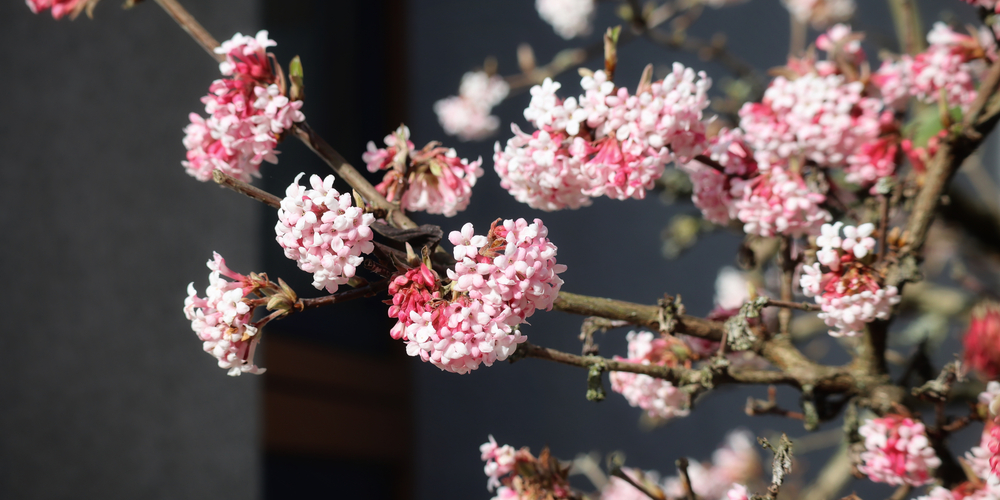Viburnum are deciduous shrubs that can make a good hedge once they mature. They bloom into attractive fragrant white flowers in spring, adding beauty to your landscape. What’s more, the flowers of these shrubs morph into red and purple fruits that add to the overall beauty.
In fall, when most plants are dormant, viburnum plants beautify your home with their colorful leaves. Depending on the variety you have, the foliage turns into orange, red, burgundy, or burgundy-purple as autumn rolls around. Everything about viburnum plants is beautiful, making most gardeners admire having them in their gardens.
If you are considering adding viburnum in your yard, it is important to know the kind of care it will require. Among the most important aspects of caring for viburnum is trimming it. Trimming generally helps the plant remain in shape and also revives the plant. This article will help you understand how and when to trim viburnum.
When to trim back viburnum
Timing is very key when it comes to trimming flowering plants. The best time of the year to trim viburnum is in spring, after flowering. However, you can trim your viburnum plants at any time of the year, particularly if all you want is to shape them or remove several suckers.
For hard pruning, consider doing it in early spring or late winter. This will help the plant prepare adequately to produce stronger, healthier shoots and leaves when rejuvenating. When blooming time comes, a hard-pruned viburnum will produce more flowers.
When pruning, you also need to consider the variety of viburnum you have. Different varieties are trimmed differently and at different times. Check on your local area’s season to determine the right time to trim back your flowering viburnum shrubs. The other most important thing that can lead you to know when to trim viburnum is the purpose of trimming.
How to trim viburnum
Most viburnum grows to about 2-30 feet, depending on the variety. Despite how long it will grow, it usually has a well-formed shape. Well, while some people find it okay to maintain the plant’s natural shape, some prefer trimming their viburnum shrubs back to help keep them orderly and in desirable shape.
How you trim viburnum depends on either the variety or purpose of trimming. Here are the most common reasons for trimming the viburnum and how it is done for every reason.
1. Trimming for maintenance
When you trim back the viburnum to control its shape and size, you are trying to maintain it. The process is simple: Use hand shears or knives to cut just above the branch nodes. New shoots will be produced at that point where you have cut. If there are many side shoots, you can pinch a few off to help maintain shape.
2. Trimming to thin out
This removes damaged and crowded branches to help thin the plant. If you are trimming to thin out, you should use more advanced pruning shears because you will be cutting out at least a third of the viburnum bush size each year.
3. Hard pruning
Hard pruning can be achieved best within three years. It is done to rejuvenate the plant when you feel like it is just a stack of bushes growing tall. The three-year trimming plan will yield results from the first year, but the best results will be seen after the third year.
- 1st year: Cut back the old branches leaving just a few inches of the plant from the ground. Ensure you space the viburnum and remove all damaged and dead branches. When you see little shoots sprouting within the first year, pluck them off using your hands.
- 2nd year: Cut a third of the new branches that have formed at the ground level. These new branches will later fill in the spaces within the viburnum.
- 3rd year: All you need is to do a little hand pruning. At this time, the viburnum will have grown to become the natural flowering shrub you ever wanted. Afterward, you will prune after the bloom season ends.
Note: To avoid damaging the plant and spreading diseases, make sure you sharpen and sterilize the equipment you use to trim back the viburnum.
Conclusion
Trimming and pruning are among the most important activities that help maintain the viburnum and keep them in good shape. To revive or rejuvenate the viburnum, trimming can also be done.
This type of trimming is generally referred to as hard trimming. Proper timing is also very critical when it comes to trimming the viburnum.

